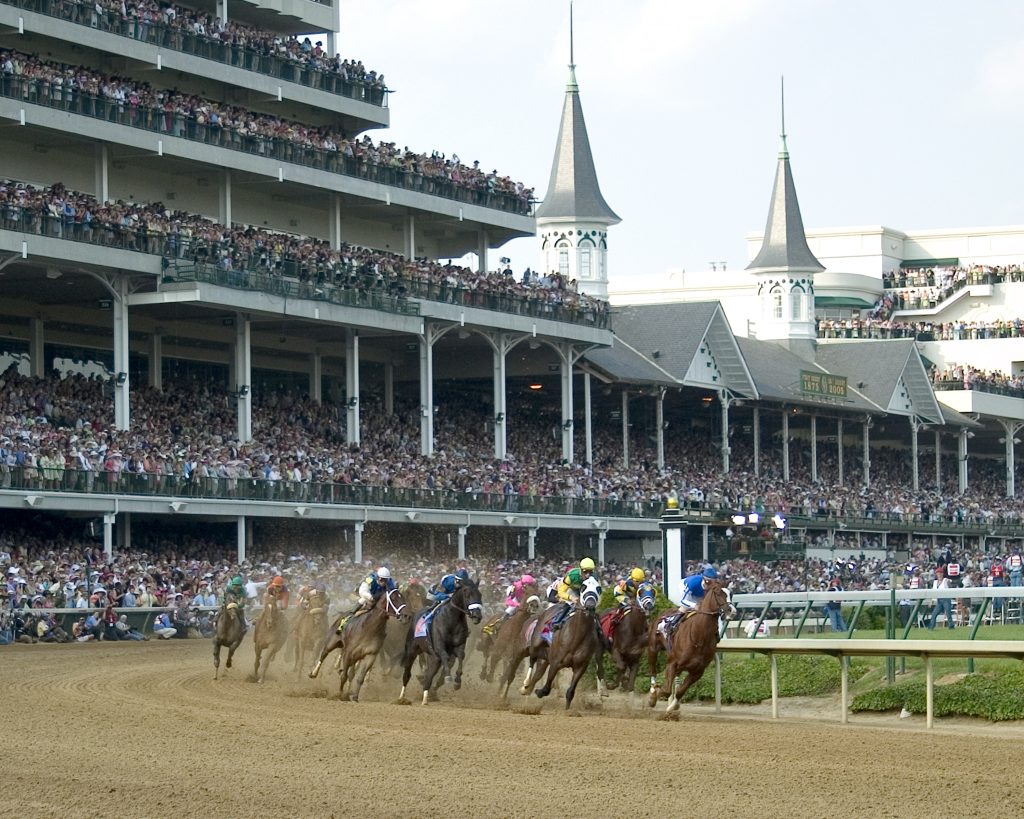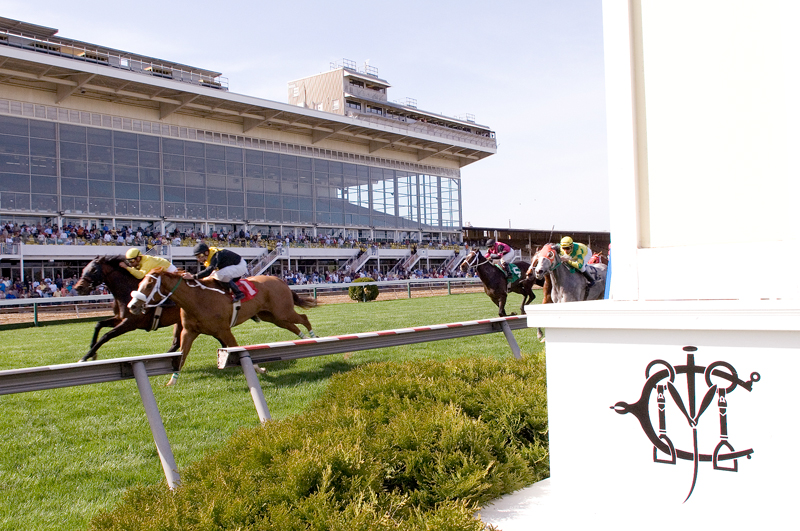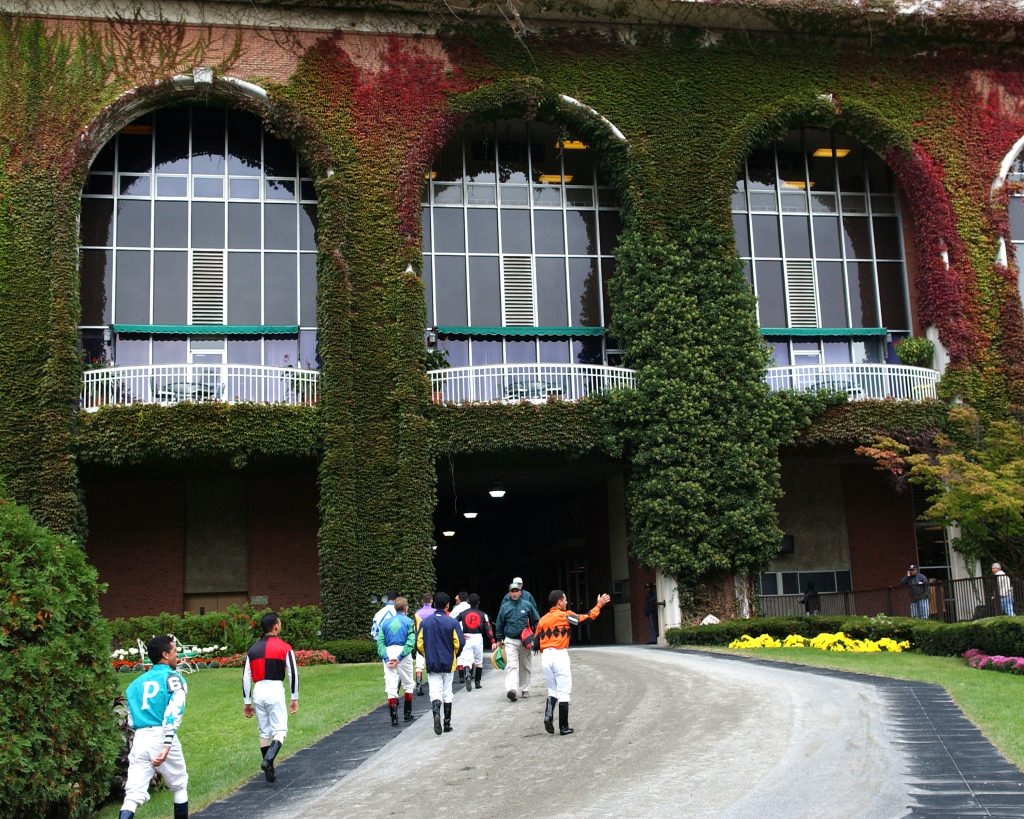Triple Crown Trivia: Celebrating the Sport of Kings
As we embark on a monumental Triple Crown trail kicked off by the 150th Kentucky Derby, we are excited to celebrate the season with some facts and fun stuff to share with your horseracing friends.
150th Kentucky Derby – Saturday, May 4, 2024
Churchill Downs Racetrack – Louisville, Kentucky

The Kentucky Derby is held annually on the first Saturday in May at Churchill Downs Racetrack in Louisville, Kentucky. Celebrating its 150th running in 2024, the traditions run deep and the winner will have a shot and being crowned a Triple Crown champion by winning the following two jewels of the trail with the Preakness and Belmont.
- 2024 Purse: $5 million
- Race Length: 1 ¼ miles
- First Winner: Aristides (1875) – 2:37.75
- 2023 Winner: Mage – 2:01.57 – 15-1 odds
Trainer: Gustavo Delgado – Jockey: Javier Castellano
Win: $32.42 – Place: $14.58 – Show: $9.08
$2 Exacta: $330.44 – $0.50 Trifecta: $491.18 – $1 Superfecta: $15,643.65 - Fastest Winner: Secretariat (1973) – 1:59.4 – 3-2 odds
Win: $5 Place: $3.20 Show: $3 - Winningest Trainers: Ben Jones and Bob Baffert with 6 each. Jones won in 1938, 1941, 1944, 1948, 1949 and 1952 and Baffert won in 1997, 1998, 2002, 2015, 2018 and 2020.
- Winningest Jockeys: Eddie Arcaro and Bill Hartack with 5 each. Arcaro won in 1938, 1941, 1945 and 1952 and Hartack won in 1957, 1960, 1962, 1964 and 1969.
- Who’s the Favorite? Forty winners have won as the favorite in the race.
- Tasty Tradition: The traditional drink is the Mint Julep, consisting of Kentucky Bourbon, simple syrup, fresh mint and crushed ice. Over 120,000 of the delicious cocktails are sold each year.
- Trophy Trivia: The trophy weighs 3.5 pounds and is custom made each year for the champion. The owner receives a gold trophy while the trainer, jockey and breeder win a silver half size replica of the main gold trophy.The first documented trophy for the Kentucky Derby was in 1925 for the 50th “Golden Anniversary” of the Derby. Churchill Downs president at the time, Matt Winn, commissioned artist George L. Graff to design the trophy.The 18-karat gold horseshoe on the trophy was pointed downward until Derby 125, when the change was made to turn the horseshoe so the ends pointed up. Superstition says the luck will run out of the horseshoe if it’s pointed down.
The completed trophy takes approximately 2,000 hours of labor to make, and 29 parts are combined into 19 components to make the trophy.
- Wearing the Roses: A tradition dating back to 1896, the winning horse receives a garland of red roses that is draped over the saddle and prominently displayed for all to see. The garland consists of more than 400 roses, is two and a half yards long and weighs about forty pounds. Historically, the roses were grown in Louisville, Kentucky by the Dreisbach family wholesale florist. The roses are now imported from warmer climates and assembled at a local Kroger grocery store location for fans to see.
- Sing the Song: A longtime tradition at the Kentucky Derby is when the entire crowd pauses and sings “My Old Kentucky Home” as the horses prance onto the track for the running of the race. The University of Louisville Marching Band leads the sing-along with the full musical rendition.
149th Preakness Stakes – Saturday, May 18, 2024
Pimlico Race Course – Baltimore, Maryland

Held annually two weeks after the Derby, the Preakness Stakes is the middle jewel in horse racing’s Triple Crown. Run at Pimlico Race Course in Baltimore, Maryland, it challenges 3-year-old thoroughbreds over a slightly shorter distance of 1 3/16 miles. Nicknamed “The Second Saturday in May,” it features similar traditions like elaborate hats, festive crowds and tasty cocktails.
- 2024 Purse: $2 million
- Race Length: 1 3/16 miles
- First Winner: Survivor (1873)
- 2023 Winner: National Treasure – 1:55.12 – 4-1 odds
Trainer: Bob Baffert – Jockey: John Velazquez
Win: $7.80 Place: $4.00 Show: $2.60
$2 Exacta: $31.80 – $0.50 Trifecta: $12.10 – $1 Superfecta: $72.40
- Fastest Winner: Secretariat (1973) – 1:53.00 – 1-1 odds
Win: $2.60 – Place: $2.20 – Show: $2.20 - Winningest Trainer: Bob Baffert with eight wins in 1997, 1998, 2001, 2002, 2010, 2015, 2018 and 2023.
- Winningest Jockey: Eddie Arcaro with six wins in 1941, 1948, 1950, 1951, 1955 and 1957.
- What’s with the weathervane? Completely unique to the Preakness is the famed historic weathervane, a tradition since the Preakness’s return to Baltimore in 1909. The weathervane originally sat atop of the member’s clubhouse and when it was destroyed by fire in 1966, a replica of the building’s cupola was built to stand in the winner’s circle in the infield. According to the official Preakness site, “as soon as the Preakness winner has been declared, a painter climbs a ladder to the top and applies the colors of the victorious owner’s silks on the jockey and horse which are part of the weather vane.”
- Trophy Trivia: The Preakness trophy, the Woodlawn Vase, is considered the most valuable trophy in sports. It was crafted in silver by Tiffany & Co. and had an estimated value of more than $4 million in replacement value. The vase is named the Woodlawn Vase because during the Civil War it was buried at Woodlawn Farm in Kentucky so as not to be discovered and melted into shot for Confederate Army soldiers.
- Running the Distance: The Preakness has been run at seven different distances: ?1 ½ miles: 1873–1888, 1890; ?1 ¼ miles: 1889; ?1 1/16 miles: 1894–1900, 1908; 1 mile and 70 yards: 1901–1907; 1 mile: 1909, 1910; ?1 1/8 miles: 1911–1924; ?1 3?16 miles: 1925-present
- Black Eyed Susan Celebration: The winning horse at the Preakness is draped with a colorful blanket made of thousands of yellow daisies, with black centers painted on to resemble Black-Eyed Susan flowers (Maryland’s state flower) that do not bloom until June in Maryland. It takes four people eight hours to create the blanket. This tradition began in 1940.To honor the tradition, the Black-Eyed Susan Cocktail was created and made with 1 ounce of Kentucky bourbon, 1 ounce of vodka, 1 ounce of peach schnapps, 2 ounces of orange juice, 2 ounces of sour mix and an orange slice and cherry for garnish.
Belmont Stakes – Saturday, June 8, 2024
Belmont Park – Elmont, New York

The Belmont Stakes, the final leg of the Triple Crown, is the toughest test along the Triple Crown trail with a distance of one and a half miles at Belmont Park in New York. Held five weeks after the Derby, it’s the race where champions are truly forged. Only 3-year-olds can compete, and the winner is famously adorned with a blanket of red carnations, New York’s state flower. If the winning horse has also won the Kentucky Derby and the Preakness Stakes, they will earn the coveted Triple Crown Champion status and a $5 million bonus.
- 2024 Purse: $2 million
- Race Length: 1 ½ miles
- First Winner: Ruthless (1867)
- 2023 Winner: Arcangelo – 2:29.23 – 7-1 odds
Trainer: Javier Castellano – Jockey: Jena Antonucci
Win: $17.80 Place: $7.20 Show: $4.90
$2 Exacta: $68 – $0.50 Trifecta: $66.62 – $1 Superfecta: $133.24
- Fastest Winner: Secretariat 2:24.00 (1973)
Win: $2.60 – Place: $2.20 - Winningest Trainer: James Rowe with eight wins in 1883, 1884, 1901, 1904, 1907, 1908, 1910 and 1913.
- Winningest Jockey: Eddie Arcaro with six wins in 1941, 1942, 1945, 1948, 1952 and 1955.
- Trophy Trivia: The Belmont Stakes trophy is a Tiffany-made silver bowl that is 18 inches high, 15 inches across and 14 inches at the base. A silver figure of Fenian, the winner of the third running of the Belmont Stakes in 1869, sits on the top of the bowl. The bowl is supported by three horses representing the three foundation thoroughbreds — Eclipse, Herod and Matchem. The trophy was originally presented by the Belmont family as a perpetual award for the Belmont Stakes in 1926. The winning owner is given the option of keeping the trophy for the year their horse reigns as Belmont champion. The owner of the winner of the Belmont Stakes also receives, permanently, a large silver tray with the names of the previous Belmont winners engraved on it. There are also trays for the winning trainer, jockey and exercise rider as well as mementos for the groom.
- Trying for the Triple Crown: There have been 29 horses enter the Belmont Stakes with a chance to win the Triple Crown. Only 13 have come away with horse racing’s biggest prize. American Pharoah became the first to do so in 2015 since Affirmed way back in 1978.
- White Carnation: The white carnation is the traditional flower of the Belmont Stakes and a blanket of flower is worn by the Belmont Stakes winner. It takes 10 man hours to put together and consists of approximately 700 carnations that are glued onto a green velveteen spread. The flowers are shipped in from either California or Bogota, Colombia.
- Big Sandy: Belmont Park is the largest dirt track in North America at one and a half miles long, making the Belmont Stakes the most grueling of the three Triple Crown races. In addition, it is known as one of the most challenging tracks out there because of the sandy terrain, which makes it harder to navigate through earning the nickname ‘Big Sandy’.

 Over the last 15 years, the post-time favorite has won the Preakness nine times. That’s a winning percentage of 60 percent.
Over the last 15 years, the post-time favorite has won the Preakness nine times. That’s a winning percentage of 60 percent.



